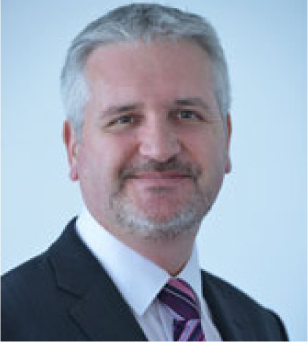
On 21 December 2014 there was widespread coverage of a leaked Association of Ambulance Chief Executives (AACE) document that included plans to change the response times for some Red 2 patients—those with serious but not life-threatening conditions.
The proposals suggest that the most serious Red 2 calls would be re-categorised into the Red 1 category, alongside the development of two new categories of Red 2 calls, with slower response time targets. The higher priority Red 2 call category would still be covered by the 75% 8-minute target, although there would be an extra 2 minutes allocated to allow the ambulance service more time to assess the case. The second Red 2 category, believed to encompass approximately 40% of the Red 2 calls, would be managed within the existing 19 minute ambulance response time target, plus the extra 2 minutes to allow for better medical assessment. It is this second group of lower acuity Red 2 patients who would no longer receive an initial response in 8 minutes.
According to the BBC (2014), the proposals were dated 16 December and were drawn up for the AACE (AACE). NHS England were clearly aware of the sensitivity of the document as it was apparently stated that the plans were confidential and ‘should not be disseminated beyond the group’ involved in the discussions. The document was leaked by a whistle-blower who was said to have serious concerns over patient safety, but this makes the presumption that the current response target driven system is safe and effective and that patients will suffer if an ambulance does not arrive within 8 minutes. The commentary that accompanied this leak also raised the suspicion that the AACE were making this proposal in order to take pressure off ambulance chief executives rather than improve the service they provide, a point echoed by the College of Paramedics in their press release of 21 December 2014 (College of Paramedics, 2014). I would like to address these points and, in so doing, open up dialogue with the profession about where we need to go.
The ambulance service has had response targets since the original ORCON (Operational Research CONsultancy) standards were published in the mid-1970s and it would be difficult to find any ambulance clinician who would argue against getting medical help to critically ill patients as quickly as possible. The problem is that there is little, if any, evidence to support an 8-minute response target. A patient in cardiac arrest is unlikely to do well even if an ambulance arrives in 8 minutes if nothing has been done prior to their arrival, and the same is likely to be true for a patient with a catastrophic haemorrhage or respiratory arrest—there is an argument that for genuine immediately life-threatening conditions a shorter response target should be set but this is simply not feasible in most cases so we are left with an ‘achievable’ but clinically meaningless target. To add to the burden, call-connect was introduced in April 2008, which meant that ambulance services needed to respond, on average, 90 seconds more quickly (National Audit Office, 2011). This prevented ambulance services from undertaking effective triage of calls prior to dispatching a vehicle so raised questions about the appropriateness of that response.
The drive towards chasing response times has seen a significant increase in the number of solo-response units that are not capable of transporting patients and question marks surround the way these resources are used. If the purpose of a rapid response vehicle is to provide emergency care to a patient with a life-threatening condition until the arrival of a double-crewed ambulance, then it would seem sensible to dispatch a double-crewed ambulance as soon as possible.
There is both anecdotal evidence and public criticism by coroners to show that this does not always happen and that responders are sometimes left on scene with very sick patients for long periods of time. This situation impacts not only on patient care but on the health and well-being of the attending clinician and is a by-product of a target-driven, tick-box approach to patient care.
In a system that is driven by time targets, the imperative to respond another vehicle to back-up the solo clinician is reduced; after all, the solo has stopped the clock on that job and it may be argued that the double-crewed ambulance can be better utilised to stop the clock on another case. It is easy to criticise managers who focus on stopping the clock rather than focusing on patient care but they are doing what successive Governments have told them to do and they will continue to do it for fear of losing their jobs. Targets skew priorities and there is evidence to support this from across the wider NHS (4-hour A&E waiting times, for example); the ambulance service is not unique.
A further problem stems from a system of dispatch that is said to over-triage a large number of patients into the life-threatening conditions category. Anthony Marsh, CEO of West Midlands Ambulance Service NHS Foundation Trust, has insisted research has found that 40–50% of ambulance calls are categorised as life threatening, while only around 10% should fall into this category (Watt and Tran, 2014). If four of every five calls that are categorised as life-threatening are not, then we need to question whether the triage and dispatch systems in use in UK ambulance services are fit for purpose. Clearly this rate of over-triage is going to have an adverse effect on response times, but the consequences will run much more deeply and will ultimately impact upon the structure of the entire service.
So, is the AACE proposing these changes in order to take pressure off ambulance chief executives rather than improve the service they provide? It perhaps seems logical to draw that conclusion given the current crises in the ambulance service but I think it would be very difficult to substantiate that argument. My view is that a move away from these time-driven targets is long overdue but I am critical that the AACE has not engaged with the profession and other interested parties, and has instead kept these discussions confidential. I would have thought that dialogue with the profession would have been helpful on many levels and it is disappointing that the AACE has not deemed it appropriate to be inclusive. The AACE may have had genuine reasons for confidentiality that I am as yet unaware of but a more open discussion may have prevented this leak and the subsequent sensationalist commentary.
An example of sensationalism surprisingly came from the health unions who were quoted as demanding to see the clinical evidence for changes, which they said could put lives at risk and who went on to state that: ‘what they [AACE] are doing is highly dangerous’ (Watt and Tran, 2014). I think it is perhaps of equal merit to demand that the unions provide the clinical evidence to maintain the current position, which is what they are arguing for, but more importantly I would ask them to tone down the rhetoric. I haven't read the full AACE proposals because they were unavailable at the time of writing so I cannot comment on just how dangerous they are, but I suspect the most dangerous thing that the AACE has done is to do this covertly and to not include all interested parties.
We do need performance measures but we need meaningful measures rather than relying on targets that are easy to quantify but which skew the priorities away from patient care. We have started to move towards clinical indicators and this has been helpful, but now we need meaningful dialogue and the input of you, the professional, to inform the next steps.

The Association of Ambulance Chief Executives (AACE) has been discussing these proposals in principle for over 18 months and they have been shared with NHS England, ambulance Trusts CEOs and medical directors repeatedly over this time. They are of course, as we have said many times, merely proposals, but they have the backing of all of the medical directors within each Trust and of their CEOs.
We firmly believe that we need more time to fully ascertain the true nature of the 999 emergency to ensure we send the correct and most clinically-appropriate response. The increased time gained to do this by dispatching on disposition, or a default 180 seconds (as opposed to the current default 60 seconds), will help us to do so. Recent trials in the South West Ambulance Service Trust showed that this benefitted patients in the round. Medical directors have agreed which Red 2 patients should be moved into Red 1, so ensuring that there is no detriment to any patient of this additional 2 minutes spent triaging the call. In effect, this means more patients receiving our highest level of response.
In terms of the remaining Red 2 patients, we are proposing that about 40% of these no longer receive an initial response in 8 minutes (usually with a rapid response unit), but are instead managed within the existing 19-minute ambulance transport target which applies to these patients.
Once again, working with medical directors we have proposed which patients should fall into this category. Medical directors have agreed this set of patients can safely be managed in 19 minutes and we firmly believe this is the correct thing to do, so freeing up resources to ensure that other patients do not wait too long for an ambulance response. We accept, of course, that the clinical evidence we have used will be subject to external scrutiny and that has always been the case. That is why these changes remain a set of proposals that needs to be scrutinised and consulted on more widely before they are implemented. NHS England have also been clear that this is the case.
While we have not formally consulted on this with the College of Paramedics, we have discussed the need for target reform informally at various meetings involving the College or College members. If the proposals are taken forward then we will of course involve the College more formally in that consultation, as I am sure will NHS England.
We are most certainly not advocating this change to take pressure off ambulance services or ambulance chiefs, as Gregory suggests. We are proposing it because it is clinically the right thing to do for patients and will allow ambulance Trusts to use their precious resources to best effect and deliver benefits for both patients and staff. As Gregory points out, ambulance staff have long been critical of the vast number of patients who we try to reach in 8 minutes who clinically will not benefit from this and who could safely be managed in 19 minutes. This also needs to be coupled with further development of a more sophisticated suite of Clinical Outcome Indicators going forward.
In terms of confidentiality and also for accuracy, it was NHS England who drove the recent round of meetings before Christmas, and who asked for the discussion to be kept to a discreet group while the proposals were considered and developed further. This is something that the AACE both understands and respects.
